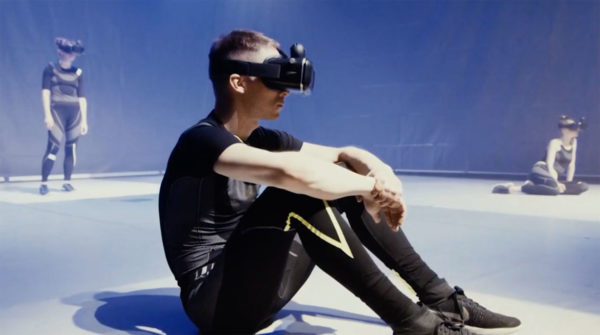““M.O.N.D” (Meditation on Non Destruction) is a collective research process on the notion of conflict and parallel reality. We focus on the principles of combat disciplines and techniques for survival tested during real combat and war situations and specifically designed for endurance, effectivity, dissolving tension and redirecting aggression. The live performance is a choreographic situation that displays a series of physical, somatic and psychic encounters allowing tension to be channelled into performative systems that produce the effervescence of an never ending oscillatory game of self-regeneration. In the space of the theater we are launching a myth into the future where the audience is invited to activate the parallel meanings of asimulated reality composed by an fragmented milieu continuous physicalities, nonlinear dynamics and aesthetics of confrontation.”
…
After a 2-month research period, Felix Ott, Bahar Temiz, Emily Ranford, and myself presented a second edition of the “Meditation on Non-Destruction” (MOND) performance at Uferstudios in Berlin.
Based on the study of non-equilibrium states and conflict, MOND took its inspiration from Systema martial practice, Cranio-Sacral therapy and various other approaches, including the study of metatability, swarm movement dynamics, prey-predator dynamics, and behavioral psychology.
We also had training with a former Israeli special forces operative to learn the CQB (closequarters combat) techniques and to explore them through choreography. CQB has a lot of common with swarm movements found in nature and takes a lot of inspiration from there. It was interesting to observe and to explore how these various natural movement dynamics find their way into combat applications and the close connection between the military and nature.
In this presentation, our objective was to explore the aesthetics of combat training, both physically and psychologically, as well as the use of VR technology as a tool to both augment and escape the reality of conflict. While the first presentation we did a year prior to that focused more on the physical sensations of pain and recovery, this presentation focused on collective dynamics and our propensity to project and imagine alternative versions of reality through exercising the possibilities that may go wrong. Training, therefore, may itself become the breeding ground for conflict. Rehearsing whatever it is that may go wrong (or right) has the capacity to manifest the reality that it’s trying to emulate and to erase the boundary between the real and the fiction.
…
Outside eye: Felix Ott, Inside Eyes: Bahar Temiz, Emily Ranford, Dmitry Paranyushkin, Third eye: Diego Agullo; Ear: Alex Kassian
Financed by APAS, Uferstudios, Berlin Senat

